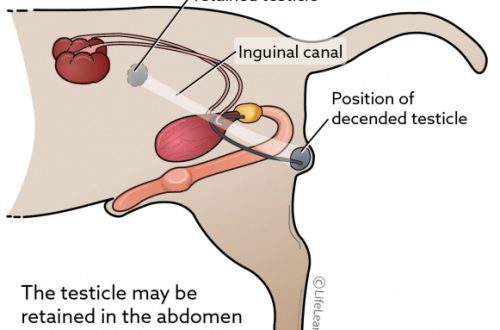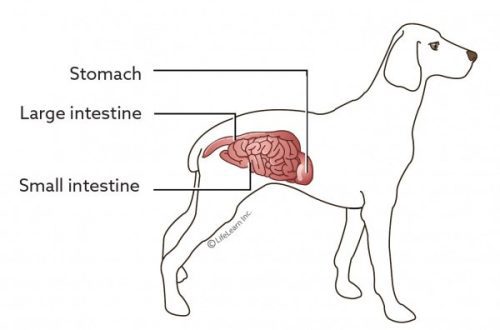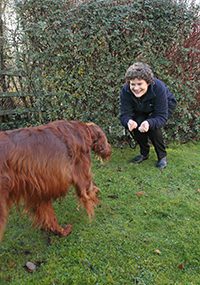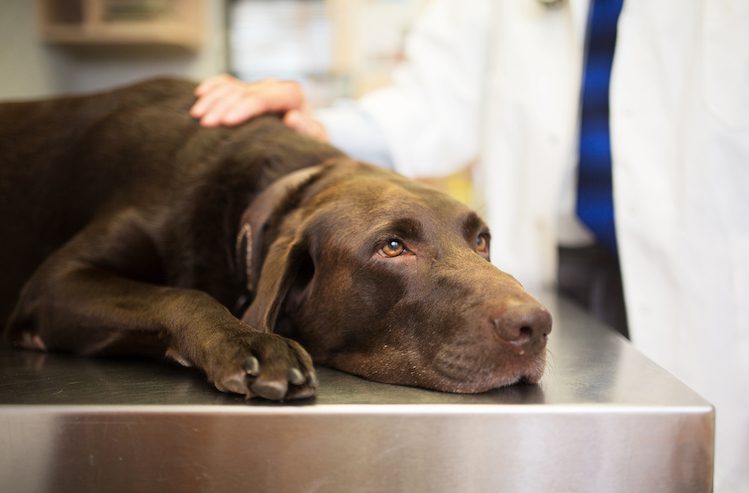
cystitis in a dog
Cystitis is an inflammation of the bladder. The dog often goes to the toilet and looks sickly. It is important to take your pet to the veterinarian as soon as possible so that the situation does not worsen.
We will tell you what cystitis is, what its causes and symptoms are, and how to help your dog cope with the disease.
With cystitis, the pathological process is concentrated in the bladder, and not only the mucous membrane of the organ, but also its muscle layer can be affected.
The disease occurs as follows: pathogenic microbes (E. coli, staphylococci, streptococci, etc.) enter the bladder through the urinary tract. There, bacteria form ulcers and destroy the shell of the organ.
Most often, cystitis occurs in females due to the structural features of their urinary system – it is more open and shorter than in males. Hormonal surges, frequent pregnancies and childbirth weaken the dog’s immunity, which is why she is even more at risk of the disease.
Also, the disease often occurs in dogs of small or short-legged breeds. In the cold season, their body is weakened, and the close location of the genitals to the ground provokes their hypothermia.

We found that most often cystitis occurs in females and small breeds, but there are several other reasons for the development of this disease in any dogs:
bathing in ice water;
prolonged exposure to a cold surface (for example, sleeping on a tile);
inflammation and stones in the kidneys and bladder;
genital infections;
various neoplasms;
helminths;
problems with the vessels of the urinary system;
drug treatment or long-term treatment with highly toxic drugs;
trauma;
food allergies, nutritional and hormonal abnormalities, poor-quality feed;
viginitis (in females).
Any oddities in the behavior of the dog should alert the owner. And although the pet cannot say that it hurts, the onset of the disease can be calculated by several symptoms.
If your four-legged friend shows one or more signs, this is a good reason to sign up for a veterinary clinic:
excessive irritability and aggression;
urine with secretions (mucus, pus, blood), cloudy and with a pungent odor;
loss of appetite; refusal of food and water
the abdominal wall is dense to the touch;
constant thirst;
feverish state;
the pet goes to the toilet “in a small way” for a long time and often, urine is released little by little;
vocalization
hematuria, or blood in the urine
males do not raise their hind legs when urinating; it hurts them to do it;
sometimes urine is released involuntarily;
the dog asks to go to the toilet more often than usual.
Any of the above symptoms of cystitis in a dog is a reason to start treatment immediately. It should be done only under the supervision of a veterinarian: self-medication can not only not help, but also significantly aggravate the situation.
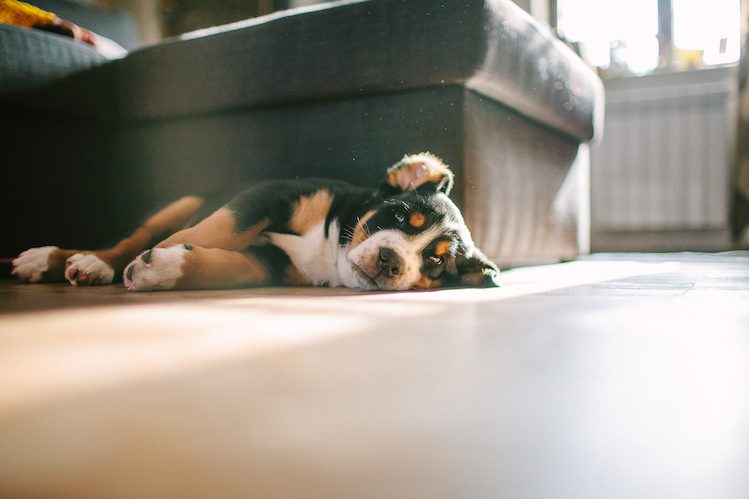
It is necessary to take the dog to the clinic in any case, even if the signs are mild or rare. Better to be safe.
To make a correct diagnosis, the specialist will prescribe a four-legged examination, take urine and blood for analysis. You will probably need a bacterial test to determine the type of infection.
The doctor may also prescribe:
cystoscopy (examination of the bottom and walls of the bladder using a cystoscope);
Ultrasound (to see how common the disease is, whether there are stones, whether other organs have been affected);
x-ray (shows neoplasms).
Medicines are prescribed only by a doctor. In no case do not buy drugs and do not treat the dog yourself without the supervision of a specialist and on the advice of the Internet.
First, as a rule, the doctor prescribes antibiotics, and then – a medicine that affects a specific problem.
The owner needs to be prepared for the fact that the treatment of cystitis in a dog will be long, at least 3 months. It is very important to cure cystitis completely and not stop taking medication, even if the dog’s health has improved significantly.
It is in your power to help your tailed friend and make his treatment as comfortable as possible. Build a comfortable resting place for the dog, where it is soft, warm and there is no draft. If the pet lives in a booth or aviary, then let him into the house for the duration of treatment, where he will recover faster.
In no case do not apply a heating pad to a diseased organ! Heat promotes the active reproduction of bacteria, you can only make things worse. A soft bed and a warm blanket will be enough.
If the dog has already had cystitis once, there may be a relapse. To reduce the risk of recurrence and support the functioning of the urinary system, the pet will need a therapeutic diet. There are special veterinary lines for the prevention of diseases of the urinary system. Discuss the choice of food with a veterinarian.
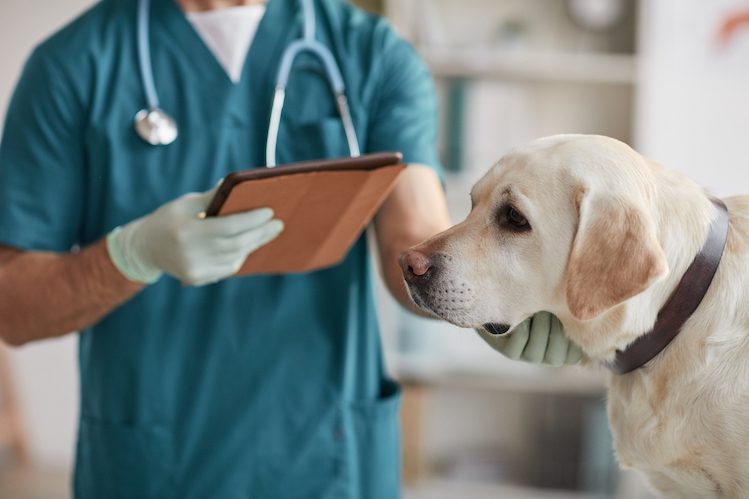
Good old wisdom: the disease is easier to prevent than to cure. And in the matter of treating cystitis in a dog, the phrase also remains relevant.
How to prevent the development of cystitis:
1. Do not allow the dog to be exposed to drafts, tiled floors, snow or any other cold surface for a long time.
2. In the bowl, the dog should have enough clean water so that dehydration does not happen.
3. The pet should go to the toilet at least 3 times a day: abstinence is one of the most common causes of cystitis. If for some reason this does not work out, put the dog in a tray or lay a diaper (for a small breed) or ask your friends to take the dog outside in your absence.
4. Owners of small breeds should buy winter dog suits, in which it is possible to open and close the genital area. Or periodically take the baby in your arms so that he warms up a little.
5. Check your pet’s oral health regularly. If there is an infection in the mouth, it can pass into the urinary tract while the dog is grooming itself.
6. Visit the veterinarian annually for a preventive examination, donate blood and urine for tests. So you can protect the dog not only from cystitis, but also from other diseases.
7. Don’t let your dog feed itself. It must be of high quality and balanced. In cheap feed there are no vitamins, a lot of salt and harmful additives, which can cause the formation of stones.
8. Try to walk females with estrus where there are no males – it is better on wastelands or outskirts. Unplanned mating can lead not only to pregnancy, but also to infections. Keep an eye on the dog in any case – close contact, especially with street dogs, can end badly.
9. For fluffy dogs, cut the hair near the anus, because. feces can remain on them, which enter the urethra and provoke inflammation.
Timely treatment bears fruit: the dog recovers and does not suffer from complications. It is in your hands to notice the symptoms of the disease in time and prevent its development.



